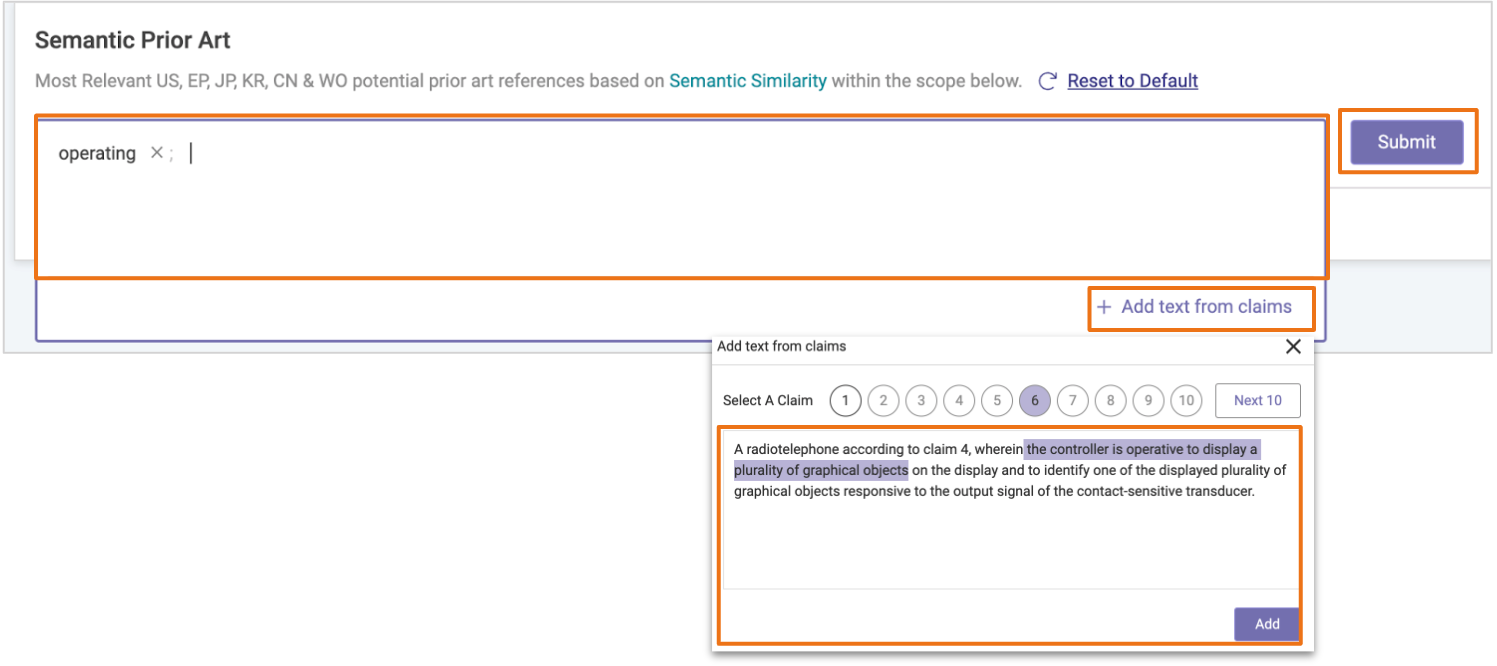Semantic Prior Art
Semantic Prior Art — Find Patents Through Semantic Similarity
Powered by AI algorithms, the Semantic Prior Art page provides as many as 300 from 14 countries, including US, EP, JP, CN, KR, WO, etc., potential prior art references (patents) with the highest semantic similarity to the patent-at-issue.
Starred (★) prior art are those with high semantic similarity within the designated scope
The starred (★) prior art found with high semantic similarity has a higher percentage of semantic similarity to the patent-at-issue than the aggregated average similarity of all US patents to their family members and §102/§103 prior art.
Simply put, the prior art (★) found with high semantic similarity is more similar to the patent-at-issue than its family/§102/§103 prior art.
Under Cross-reference:
- CONS (Considered) - This reference already appears in the patent’s prosecution history or PTAB proceedings.
- 2nd - This reference is in the 2nd-degree prior art results (a backward or forward citation of CONS).
- FAMI (Family) - This reference is in the family prior art results.

Semantic Prior Art with high semantic similarity (★) is also included within the Potential §103 prior art on the Overview page.
Semantic Prior Art — Find Patents Through Semantic Similarity
By default, the Semantic Prior Art results are based on a comparison of the patent’s first claim and abstract to the English titles, abstracts, and all claims of potential references. However, you can change the Semantic Prior Art's scope.
- Click on "Change Scope"

-
Click the text box and type in your own term(s)
-
Or, you can"Add text from claims"
- Select a claim, highlight a term, and then click “Add”
-
Once you are finished, click "Submit"

For more details on the Semantic Prior Art page, please see the Semantic Prior Art article in Patentcloud’s Help Center.